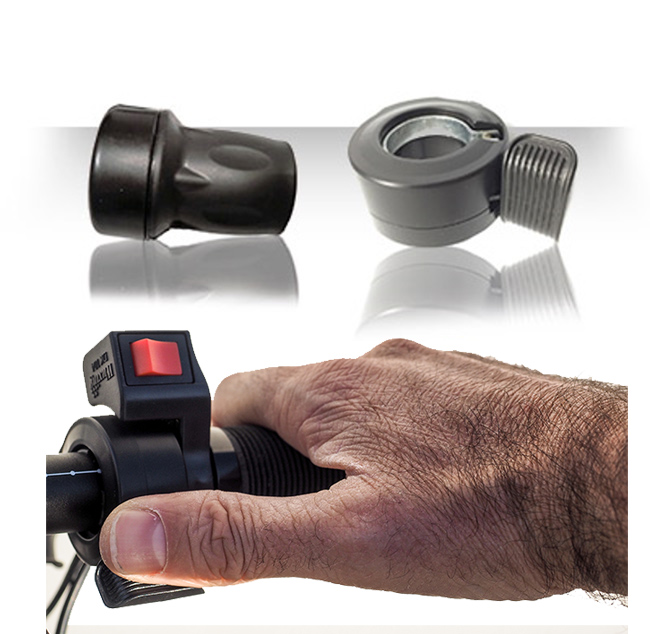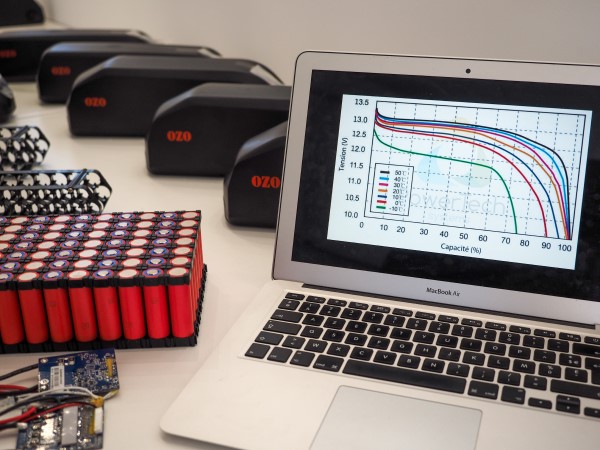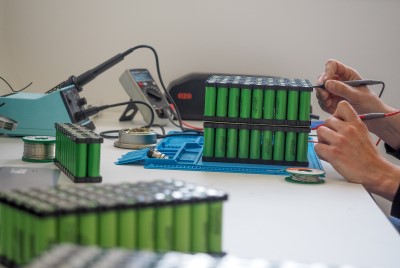Estimation of the autonomy of your electric bicycle kit
Autonomy depends on several factors:
- Relief
- Load and pilot mass
- The effort provided by the pilot
- The type of tires and their inflation pressure
- Motor efficiency
- The acceleration curve
- The actual battery capacity
- Outside temperature
- The age of your battery
- How you use your battery
In the following paragraphs, we will study the factors influencing the autonomy, then we will give you two calculation methods to estimate the autonomy of your electric bicycle kit.
The effort provided by the pilot :
It is during start-up and on climbs that we consume the most. It is therefore recommended to pedal during these phases to relieve the engine.
Depending on the effort provided, the autonomy can vary from simple to triple.
Tire type and inflation pressure :
A high inflation pressure will reduce friction losses and increase efficiency: a tire inflated to 2 Bar will consume more energy than a tire inflated to 4 Bar.
The mass of the engine increases the vertical acceleration and consequently the constraints on the structure of the tire, we recommend the following inflation pressures depending on the type of bike you own:
The mass of the engine increases the vertical acceleration and consequently the constraints on the structure of the tire, we recommend the following inflation pressures depending on the type of bike you own:
- City bike or hybrid bike fitted with our Kshield Plus or Marathon Plus puncture-proof tires:
- Motorized rear wheel = 4 Bar / Front wheel without motor = 3 Bar
- Motorized front wheel = 4 Bar / Rear wheel without motor = 4 Bar
- Full suspension or semi-rigid mountain bike:
- Motorized rear wheel = 3 Bar / Front wheel without motor = 2.2 Bar
- Motorized front wheel = 2.7 Bar / Rear wheel without motor 2.2 Bar
Engine efficiency :
The higher the efficiency of your motor, the better your autonomy will be. Our motors have efficiencies between 84% and 86%, however some electric motors on the market have efficiencies below 80%.
The acceleration curve :
This is about how you turn the handèle accelerator. As with the accelerator of your car, you should not accelerate in a binary way (all or nothing). Accelerate gradually and support your engine when starting up by pedaling. To accelerate, gradually turn the handle to avoid peaks in intensity that will decrease your range. |  |
The actual battery capacity :
Battery capacity, written in Ampere Hours (Ah), is the amount of power you can have.
Most batteries for electric bikes have a capacity of 10Ah.
A 15Ah battery will give you 50% more autonomy than a 10Ah battery (at equal cell quality).
Note that capacity has nothing to do with how much power the battery can handle. Some 10Ah batteries withstand 40A continuous discharge currents while some 20Ah batteries find it difficult to withstand 20A discharge currents.
In addition, the maximum capacity of your battery will depend on two factors:
- Quality of the cells that compose it.
- Average value of the discharge current.
Indeed, entry-level cells will provide 10Ah under a discharge current of 5A, then will only provide 8.5Ah under 10A and 7.5Ah under 15A. A current of 15A is generally their limit. Cells of average quality will be able to accept currents of 20A to 25A but they will provide the 10Ah in general under a discharge current of 15A and their performance will decrease to reach about 8Ah under 25A. The high-performance cells can take up to 50A of discharge current and deliver the 10Ah of capacity under currents of 35A with no problem. For example, the Samsung cells that we use in our packs deliver 9.5Ah under 45A of continuous discharge current. |  |
The outside temperature :
As a general rule, traction batteries, all technologies combined, retain their performance for temperatures between 10°C and 35°C.
At around 0 ° C or below, there is a loss of autonomy of 20% to 30% depending on the batteries.
This loss of autonomy in low temperatures is valid for charging and discharging, which is why we recommend that you charge your battery indoors between 10 ° C and 25 ° C.
The age of your battery :
The older the battery, the poorer its performance. Here too the quality of the cells is involved. Indeed, some entry-level lithium batteries will lose 50% of autonomy after 12 months and 70% after 18 months. In general, the loss of autonomy on a Lithium-Ion battery is 20% after 300 cycles (1 year) and 30% after 700 cycles (2 years). The cells we use in our OZO 48V 10Ah compact batteries lose 20% capacity after 1000 cycles (3 years) and 40% after 1500 cycles (4.5 years). However, the loss of capacity on your battery may not be due only to natural cell wear. Indeed, if your BMS is not of good quality, it can create an imbalance of performance of the cells constituting your pack. If your battery is no longer under warranty and is less than two years old, we can work on it in the workshop to "boost" the faulty elements and allow you to regain a few additional Ah. |  |
How you use your battery: (charging, discharging, storing, etc.)
To optimize the life of your battery, you will need to follow the instructions for use that will be provided with your OZO Lithium battery.
Beware of advice that can be found on forums or from some distributors that are far from the truth.
Whatever the technology of your battery, never store it when it is completely discharged.
Beware of advice that can be found on forums or from some distributors that are far from the truth.
Whatever the technology of your battery, never store it when it is completely discharged.
Methods for estimating the autonomy of your electric bicycle kit :
Average power consumed:
Energy consumption is directly linked to the average power required:
For example, if you have a 36V-10AH battery, the on-board energy is 360Wh; if the motor used consumes an average power of 100W continuously, an autonomy of 3.6 hours can be envisaged with this installation.
With an analyst cycle or a wattmeter you will know the power consumed in real time.
Energy consumed per Kilometer:
10Wh/km is the average value you can use to simplify your autonomy calculations. This value corresponds to “assisted” use on asphalt and hilly roads with a 80Kg cyclist providing “normal” effort and tires inflated to 3 Bar. "Assisted" use means that the cyclist is pedaling and not using their bicycle as a motorcycle.
Energy consumption is directly linked to the average power required:
For example, if you have a 36V-10AH battery, the on-board energy is 360Wh; if the motor used consumes an average power of 100W continuously, an autonomy of 3.6 hours can be envisaged with this installation.
With an analyst cycle or a wattmeter you will know the power consumed in real time.
Energy consumed per Kilometer:
10Wh/km is the average value you can use to simplify your autonomy calculations. This value corresponds to “assisted” use on asphalt and hilly roads with a 80Kg cyclist providing “normal” effort and tires inflated to 3 Bar. "Assisted" use means that the cyclist is pedaling and not using their bicycle as a motorcycle.
Tableau comparatif de la distance moyenne en fonction de la batterie :
Batteries | 36V 9Ah | 36V 11Ah | 36V 14Ah | 48V 10Ah | 48V 15Ah |
Embedded energy | 324 | 396 | 504 | 480 | 720 |
Distance (for 10Wh of consumption/Km) | 33Km | 40Km | 50Km | 48Km | 72Km |
These values are only indicative. These can be doubled if you pedal often, or halved if you do not pedal.
The cycle analyst also measures the energy consumed per kilometer.
The cycle analyst also measures the energy consumed per kilometer.

